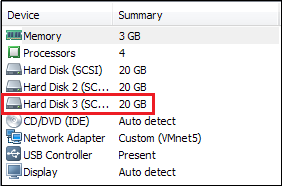

- #Novell filr documentation install
- #Novell filr documentation license
- #Novell filr documentation download
- #Novell filr documentation mac
- #Novell filr documentation windows
Any registered user can download an evaluation version of Filr 1.0 in the form of an Open Virtualization Format virtual appliance ( Filr.x86_64-0.0.) from the Novell download page.


Novell states that the minimum requirements for the host system are 12GB of RAM and 100GB of hard disk space for a small installation: Filr, a MySQL database, and the Lucene engine all run on a virtual machine.Īn alternative is a large setup with three separate virtual appliances for the Filr software, the database, and the Lucene engine. ) rather than network folders, the system can also operate without a file server. If you want to use Filr just to serve up user directories ( My files
#Novell filr documentation windows
On top of this, Filr can integrate existing data sources that are accessible via SMB/CIFS or Novell Core Protocol (NCP), for example, on Windows 2003/2008, Novell Open Enterprise 11 (OES), and NetWare 6.5.8 servers with at least one NSS volume.įilr supports the NTFS ext3, XFS, and Btrfs filesystems. In addition to local disks, Filr supports NFS, Network Attached Storage (NAS) via NetApp, and Storage Area Network (SAN). Instead, it connects the filesystem resources with the Filr users, storing their rights, external user accounts, and connection information for proxy users. The database is not used to manage files and directories – Filr does not duplicate data but leaves it where it is. The machines provide the Filr software, the full-text search engine, and a MySQL database. Under the HoodĪ Filr setup usually consists of three VMware virtual machines running SUSE Linux Enterprise Server.
#Novell filr documentation license
A Filr license with one year of standard support costs EUR 104 50 licenses with one year of support is EUR 5,200. Additionally, Filr admins can also set up quotas at user, group, or location level. All files remain on the company's servers behind the corporate firewall, which ensures a high level of security. Filr also has a powerful, Lucene-based, full-text search feature.Ĭonnections to Filr are encrypted using SSL throughout.
#Novell filr documentation mac
Access to Filr is possible either via the modern web interface, a mobile app for iOS and Android, or native applications for Windows and Mac OS. Internal and external users thus can easily access their data and share it with other users across organizational boundaries. Filr makes the file server (network drives) and storage resources available via a logical abstraction layer. Filr, which is conceptually similar to an internally hosted ownCloud installation, focuses exclusively on file-sharing and collaboration features. Novell Filr is a new file-sharing platform designed as a cloud solution. Novell's new Filr service is such a solution. Integration with an existent directory service makes a separate user management obsolete and handles permissions for file sharing centrally. The solution also needs to ensure that all data is encrypted for mobile device access and not exported to a public cloud.
#Novell filr documentation install
A web interface is needed to ensure that access to your own data is also possible with clients on which you can't install any software. Additionally, mobile device users can access their documents offline. Such a solution removes the need for the users to battle with server names, long URLs, drive names, paths, and the like. What can an external employee do if the admin restricts access to network drives or if the network is not working as it should? In the worst case – and without the knowledge of the admin – users will upload company documents to Dropbox and synchronize them with other devices and their home office.Īlthough traditional file servers are currently still standard in many companies, a solution that gives all employees – whether internal or external – a consolidated view of the data is really what's needed. The current protocols and network filesystems are not designed for mobile use.

A secure VPN access to the company's file server is possible in principle but not very practical on mobile devices. The integration of external employees gives the topic a whole new dimension. The manufacturers of these systems see the same problem from a different angle for them, it is a matter of coordinating teamwork and storing documents efficiently. The ideal situation is for companies to require their employees to use existing document management solutions. People who use centralized file storage benefit the most. Today, people need to organize and process many documents, and storing documents related to a reference contact, event, or project on this type of system is a good idea. If you believe the marketing hype, collaboration platforms such as SharePoint, OX App Suite, Kolab, and Zarafa can do everything: With their integrated document management, they are the focal point of corporate communications and, of course, the starting point for file storage.


 0 kommentar(er)
0 kommentar(er)
